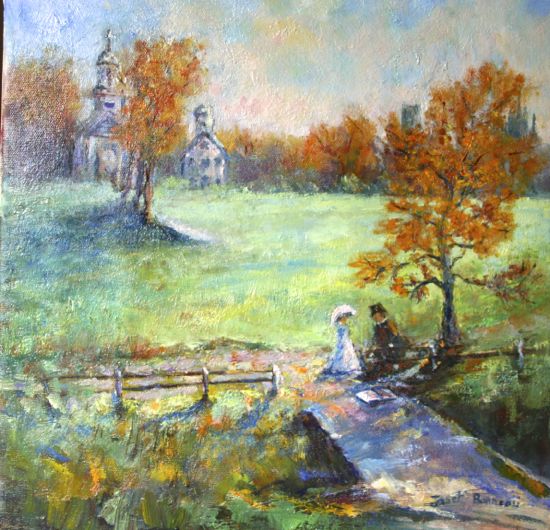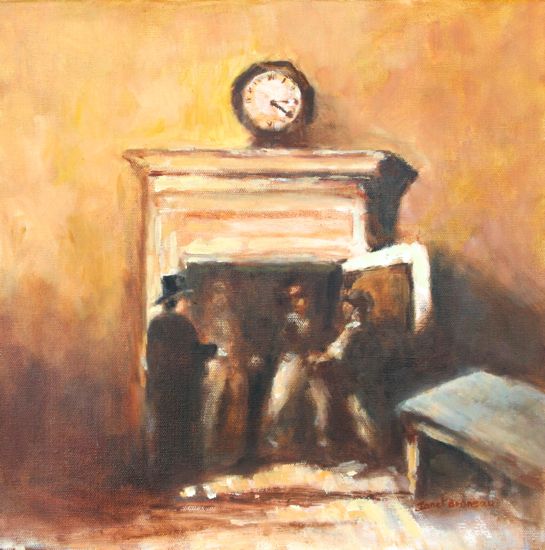October 3rd was the St. Albans Raid calendar unveiling and artists reception. I’ve been keeping these two paintings under wraps until then. The 2014 calendar is for sale and features a different scene of the Raid for each month, as depicted by area artists. All the paintings are now part of the permanent collection in the museum and proceeds from sales go to both the museum and artists. Prints from the originals are also for sale. Contact theVillage Frame Shoppe in St. Albans to purchase calendars or prints.
“The Bible Reading”
Confederate Lt. Bennett Young strolls in the park with the Minister’s daughter while plotting the Raid. To tell the story, I used my English Lit background (finally!) to symbolize good & evil (Amelia Menut Duffy you would be proud!).
The minister’s daughter represents goodness and purity; she is lit up by sunlight and dressed in white, the churches on her side are more colorful and light. Lt. Young is a black figure, cast in shadow, and the churches on his side are gray and dim. The bible lays on the ground – on her side it’s lit up, on his side it’s in shadow. TONS of symbolism here and it was really fun to tell a story through my painting!

“Tellers Into the Vault”

For this scene I chose a more subdued palette of dark colors – just barely staining the canvas so some of the weave would show through. I felt it would be appropriate for the darkness of the bank interior. For anyone who wants to wade through a bit of history – here’s a snippet from the History of the Raid from the Raid websitehttp://www.stalbansraid.com/history/the-raid/ “Why pick St. Albans? Among other things, even though the state’s governor had sought greater army protection, there were no military units in the area. Also, there were four substantial banks and the prospect of a raid on nearby Swanton as well. The men had made themselves familiar with their targets: the First National Bank on the south side of Fairfield Street (just one building up from Main Street); the Franklin County Bank, just north of the American House; and the St. Albans Bank, at the southwest corner of Main and Kingman streets. They had scouted out the full layout of the town that occupied an area a half-mile mile east to west and 2 miles from north to south. Among the 4,000 people living here, they duly noted, were some 600 to 700 employed at the Central Vermont Railway Shops on Lake Street and up to 50 at the adjacent St. Albans Foundry, located on Foundry Street, now known as Federal Street.”